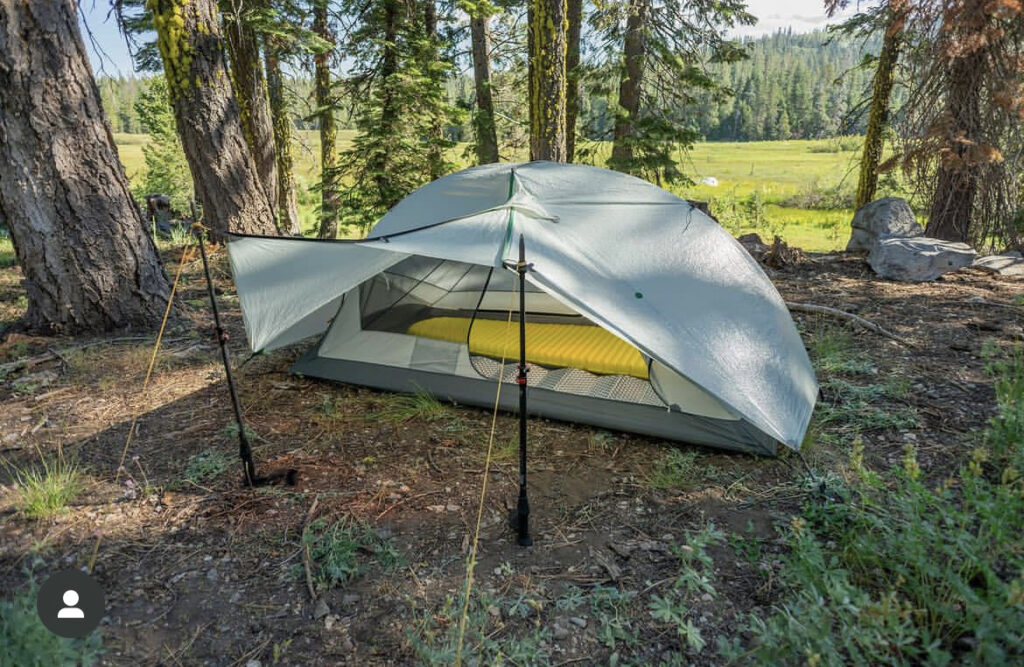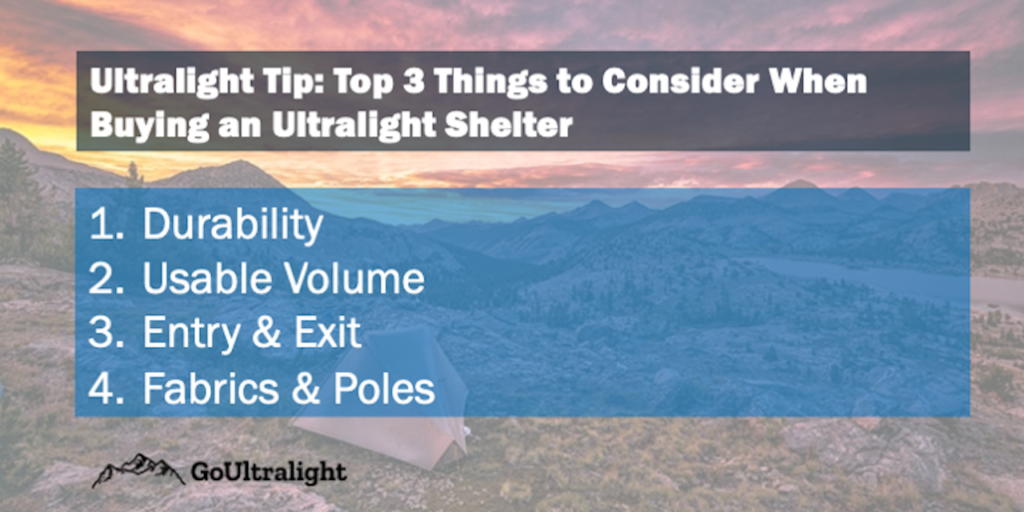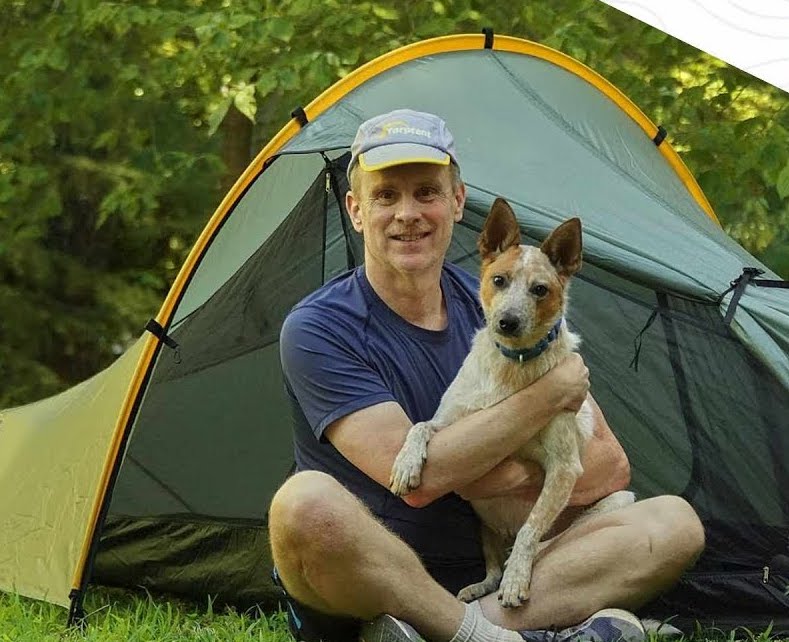Ultralight Backpacking is a way of life and gear is an essential part of going Ultralight!
With all the gear out there, you’re probably asking yourself “where do I start?” “How do I get going on my Ultralight journey?
It can take years to fully master this.
A great place to start when it comes to shaving weight is with your ultralight shelter or tent.
I’ve decided to save you some time by shedding some insight on ultralight tents along with the philosophy around UL by interviewing a pioneer in the industry, Founder and CEO of Tarptent, a leader in ultralight backpacking shelter and tent design space.
I had an opportunity to sit down with Henry Shires, the Founder and President of Tarptent, a leader in ultralight backpacking shelter and tent design. In this interview Henry provides his view on his philosophy around ultralight, how he got started, and what the future of the industry looks like to him.
Tarptent has been around for over 20 years and has been changing the rules on ultralight tent designs using cutting-edge fabrics like Dyneema, which allow ultralight enthusiasts to “focus on the joy of the journey, not the pain of getting there.” Since then, Tarptent has been a staple in the ultralight backpacking movement. Headquartered down the hill from GoUltralight in the beautiful foothill town of Nevada City, California, Tarptent’s wide selection of ultralight tents have successfully conquered all 3 ultra-long distance U.S. trails including the Pacific Crest, Appalachian and Continental Divide, as well as trails across the globe.
I hope you enjoy my interview with Henry!
Question 1: What’s the biggest problem with traditional backpacking?
Answer: In my opinion, backpacking should be about the experience of walking to destinations where you experience the natural world as detached as possible from that where you came from. That means minimizing your gear. Too many backpackers don’t get very far from home, because they are tied physically and emotionally/spiritually to their gear.
Question 2: And why is Ultralight a better approach?

Answer: Ultralight is a better approach because it frees you to live in the moment of the outdoor experience. Going light forces you to think more, to improvise more, and to be more creative. It also opens a world of advanced exploration; longer miles and off-trail routes not possible when loaded down with traditional gear.
Question 3: Describe your ultralight philosophy? Where do you fall on the Ultralight spectrum, and why? E.G. Are you purely a weight-shaver or is it more of a mind-set for you?

Answer: My philosophy is to take only what I need. By “need” I mean that which I need for basic survival — food, clothing, basic and minimalist sleeping gear–and that which enhances the memory of my experience, both in the moment and for future remembrance. That means a camera and a way to write down my thoughts.
Question 4: What’s your #1 tip for someone transitioning from traditional backpacking to Ultralight.

Answer: The best way to save weight is to leave it home. If you can’t justify it for basic survival or for capturing a memory then you don’t need it.
Question 5: What does the future of Ultralight look like in your opinion?
Answer: For products, especially tent fabrics, carbon-based materials are the future. Timing is probably after I retire but it will be fun to watch.

Featured above, the Tarptent Double Rainbow DW Ultra ($519 USD)
Question 6: What’s your favorite piece of gear in your pack and why?
My down sleeping quilt. I made it myself a number of years ago and it was a labor of love that keeps on giving.
Question 7: What’s the best backpacking trip you’ve been on (e.g. the location) and what about it was so memorable?
Answer: My first one at age 11. I hated carrying a heavy load and cried all the way up the trail to the eventual campsite at a high lake in Yosemite. Once there, though, I LOVED the experience of playing in the snowfields, fishing in the lake, and sitting around the campfire at night. I was hooked.
Question 8: What’s one piece of gear that the “weight shaver” would tell you not to bring, that you do bring on hikes and value.
Answer: Nothing. I “hike my own hike.” I’m of firm mind that a few ounces or even a few pounds either way, total pack weight depending, are impossible to notice in a loaded pack.
Question 9: What memory do you have of either forgetting gear on a trip or actively deciding not to bring, that you later regretted?
Answer: I forgot the memory card for my real camera on the Wind River High Route and had to settle for some inferior snaps taken on my iPod.
Question 10: Do you find that whatever you pack ends up being enough and you adjust to it? Or is there the “right amount” of gear to bring. (For example, on vacation if I pack 3 shirts, I’ll wear 2. If I pack 7, I’ll wear 6)
Answer: The right amount of gear is that amount which enables you to survive reasonably comfortably in the expected conditions. I can only think of one trip, a fall hike of the Tahoe Rim Trail when it turned very winter-like, where I really needed another layer. I shivered a lot and went to bed early every night but survived.
Question 11: What led you to create Tarptent? What’s the origin story? (E.G were you solving your own problem? Someone else’s problem, etc?)
Answer: I started in 1998 making gear in preparation for my 1999 PCT thru hike. The original tarptent shelter was born from that effort. At the time I had never touched a sewing machine and had no idea what I was doing but over time learned to sew and more importantly learned how to design using very sophisticated CAD tools. The genesis of Tarptent was really quite unintended. My wife, Cynthia, and Tarptent co-owner borrowed my original PCT tarptent shelter to hike the JMT and came home complaining that it was too hard to set up. In an effort to make her a better shelter, a process I thought would take me a weekend but instead took many months, the first two commercial models (Virga and Squall) were born. When I opened tarptent.com and offered those models, I naively thought we might sell 50 of them the first year. I still remember the shock of 30 orders the first day. In those days I had no manufacturing and no idea how to get it but did have the sister of a fellow PCT hiker who was a professional seamstress on the other side of the country and for the first couple of years I would cut fabric and ship it to New Hampshire. It would come back a couple of months later as a finished shelter. We moved to full scale professional manufacturing in late 2004.
Question 12: Regardless of brand, what are the top three things that make a great Ultralight shelter / tent?
Answer: You need to be able to depend on it. When ultralight becomes ultrathin and ultrapuncturable then there’s no point. Pressure rating matters. A 1200mm rating is just barely enough and only gets worse. For a trekking pole tent, do the poles get in my way and for an arch pole tent, does the pole system maximize interior volume for the given weight.
Question 13: What are the top 3 things someone should think about when evaluating an ultralight tent?

Answer: Usable volume, especially distance to fly walls at the ends, and protection from condensation should it occur. Entry/exit — two doors are far preferable to one both for ease of use and for ventilation/views. Fabrics and poles: ask yourself are they durable enough for intended use. All shelters are only as good in wind as the size of the largest unsupported span.
A BIG thank you to Henry for taking the time to answer our questions. 🙏 Head on over to https://www.tarptent.com/ to check out all the cool things this company is doing to support the ultralight backpacking space.

